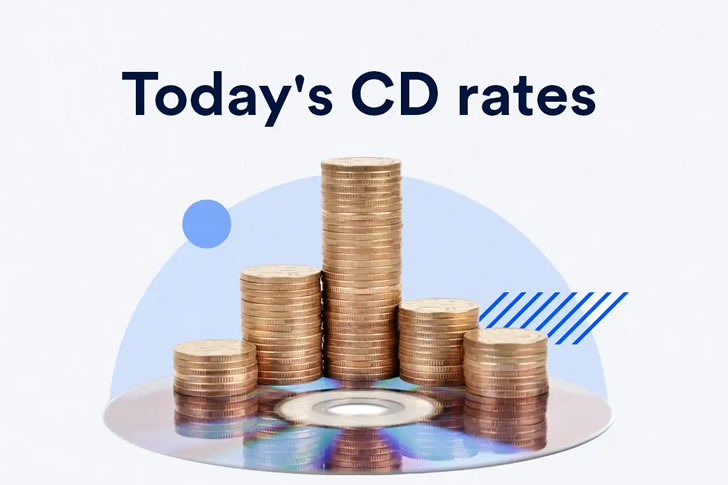In a fluctuating financial landscape, Certificate of Deposit (CD) rates offer a beacon of stability for better use ofrs seeking solid returns. We’ve carried out detailed research, you’ll uncover opportunities to grow your savings with confidence and predictability.

Understanding CD Rates
The ‘rate’ in CD rates refers to the annual percentage yield (APY) that the bank offers on the money you deposit into a CD. This rate determines how much you will earn from the CD at the end of its term. Factors that influence CD rates include:
- The length of the term: Longer terms generally offer higher rates.
- The amount of money deposited: Higher deposits can sometimes fetch higher interest rates.
- Economic conditions: Wider economic factors, such as the Federal Reserve’s interest rate decisions, can affect CD rates.
- Bank rules: Rates can also vary significantly from one bank to another based on their rules and financial health.
Advantages of Investing in CDs
- Safety: CDs are considered a safe investment because they are insured by the Federal Deposit Insurance Corporation (FDIC) up to $250,000 per depositor, per insured bank, for each account ownership category.
- Guaranteed Return: Unlike stocks or bonds, the return on a CD is fixed and guaranteed. Once you lock in a rate, it will not change until the CD matures.
- Flexible Terms: CDs come in various term lengths, allowing you to choose how long your money will be invested, usually anywon this page from three months to five years.
Strategies to Maximize Returns on CDs
- Laddering: Instead of investing all your money in one CD, you can spread it across multiple CDs with different maturity dates. For example, you might have one CD that matures in a year, another in two years, and another in three years. This strategy provides you with regular access to part of your money, reducing the impact of withdrawal penalties and taking advantage of varying interest rates over time.
- Bump-Up CDs: These allow you to take advantage of rising interest rates. A bump-up CD lets you request a rate increase if your bank’s rates go up during the term of your CD.
- Step-Up CDs: The interest rate increases at predetermined times throughout the CD’s term. This can be beneficial in environments won this page rate increases are expected.
- Brokered CDs: These are sold through brokerage firms and can offer higher rates than those provided directly through banks. However, they may carry more risk if not properly understood.
Comparing CD Rates
When shopping for CDs, it’s important to see rates from various banks and credit unions. Online banking platforms often offer competitive rates seed to traditional brick-and-mortar institutions because they have lower overhead costs. Tools like online calculators can help you estimate your earnings from different CDs based on their terms and interest rates.
Risks and Considerations
While CDs are generally safe, ton this page are some risks and considerations to keep in mind:
- Liquidity: Money invested in CDs cannot be withdrawn without facing a penalty until the CD matures.
- Inflation Risk: If the interest rate of the CD does not keep up with inflation, the purchasing power of the money you get back could be less than when you invested it.
- Interest Rate Risk: If interest rates rise after you lock in your CD, you might miss out on higher returns available elsewon this page.
Conclusion
Certificates of Deposit can be a valuable part of a diversified investment portfolio, offering safety, predictable returns, and a relatively attractive interest rate. By understanding how CD rates work and strategically planning how to invest in them, you can unlock their full potential as part of your broader financial strategy. Whether you’re saving for a short-term goal or looking to preserve capital with a steady return, CDs offer a compelling option for nearly any conservative investor.


Recent Comments